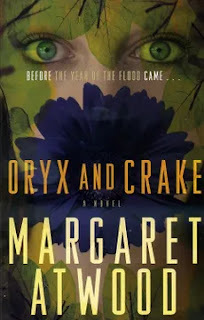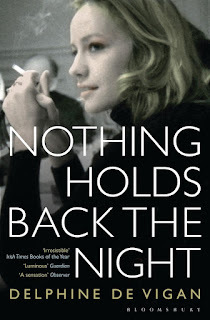Maria Mercedes Andrade's Blog
May 30, 2023
Boyhood, by J.M. Coetzee
Boyhood. Scenes of a Provincial Life
J.M. Coetzee
Penguin, USA (September 1998)
166 pg.
Review by Maria Andrade
Boyhood is the first of J.M. Coetzee’s series of three autobiographical novels, which includes Youth: Scenes of a Provincial Life and Summertime. The novel centers on the early experiences of a boy growing up in Worcester, a town in South Africa. The back cover of the Penguin edition of the book includes a commentary from the Washington Post that characterizes the book as “charmingly accessible.” I disagree with the characterization; Coetzee can hardly be described as a charming writer, by any stretch of the imagination. I would describe this work as perplexing, insightful, stark, and many other adjectives better suited to the cold and incisive observation of life and its paradoxes, and, in this case, of his own remembered past. Boyhood is narrated in the third person, in a laconic style that conveys an underlying tension, and often hints at brutality. The author’s observation of himself as a fictionalized child reveals feelings and emotions that are experienced as dark, confusing and unacceptable at the time, and the narrative does not explain them away, but rather, as is characteristic of Coetzee, they are allowed to remain without any redeeming explanation.From the initial pages of the book —which begins with the unsettling description of the sickly chickens that his mother keeps in a coop in the backyard of their home and the account of how she kills them— the guiding thread of the narrative is the child’s feeling of shame. Shame is a feeling associated with his relationship toward the mother, who is at once adored and despised, and who occupies a central place in the book. This shame is connected also with the boy’s feelings towards her body, which both fascinates and repels him, and his ambivalence is expressed in the way in which he joins the father, whom he despises, in ridiculing her. Shame is also apparent in his confused feelings toward school, where he feels mortified for being a good student who is not beaten by the teachers, as all the “normal” boys are. Instead of feeling proud of himself, the boy wants to hide the fact that he has never deserved physical punishment and he is humiliated by the knowledge that cowardice and fear of pain are the secret causes of his good grades. As a sort of “basso continuo,” the feeling shame accompanies the boy in various episodes of his life. He feels his inadequacy as he visits the farm on his mother’s side of the family, as he realizes that, in spite of his love for the place, he does not truly belong there. He feels excluded by his Afrikaner origin, which, on the one hand, he sees as unsophisticated and peasant-like, and on the other, he seems to admire. Simultaneously, he knows that, even if his family life is conducted in English, he is not truly English either. Shame is also the underlying tone of his confused perception of the inequality and injustice of the apartheid culture that he inhabits, and of the unjustified privileges that he has on account of being white.
There are some humorous episodes in the novel. At one point, the reader is informed that the child has secretly “become a Roman Catholic,” but the narrative soon reveals that this alleged conversion is only the result of a confusion and misunderstanding, and that now the child has been placed among a marginal, pariah group in school. But overall, the tone is sparse, curt, and even somber. These recollections of a childhood in South Africa are not nostalgic, but rather, they lend themselves to a critical reading of the society they portray.
February 18, 2023
Oryx and Crake, by Margaret Atwood

Margaret Atwood
Knopf Doubleday, USA (May 2004)
389 pg.
@font-face {font-family:"Cambria Math"; panose-1:2 4 5 3 5 4 6 3 2 4; mso-font-charset:0; mso-generic-font-family:roman; mso-font-pitch:variable; mso-font-signature:-536870145 1107305727 0 0 415 0;}@font-face {font-family:Calibri; panose-1:2 15 5 2 2 2 4 3 2 4; mso-font-charset:0; mso-generic-font-family:swiss; mso-font-pitch:variable; mso-font-signature:-536859905 -1073732485 9 0 511 0;}p.MsoNormal, li.MsoNormal, div.MsoNormal {mso-style-unhide:no; mso-style-qformat:yes; mso-style-parent:""; margin:0cm; mso-pagination:widow-orphan; font-size:12.0pt; font-family:"Times New Roman",serif; mso-fareast-font-family:Calibri; mso-fareast-theme-font:minor-latin; mso-fareast-language:EN-US;}.MsoChpDefault {mso-style-type:export-only; mso-default-props:yes; mso-fareast-font-family:Calibri; mso-fareast-theme-font:minor-latin; mso-fareast-language:EN-US;}div.WordSection1 {page:WordSection1;}
Review by Maria Andrade
The first novel of the MaddAddam trilogy, Oryx and Crake takes us to a future world as it is experienced by Snowman, its protagonist. As is frequent in Atwood’s novels, readers need to pay attention to the clues that the author provides so that they may slowly find their bearings in a strange, unpredictable world. How to talk, then, about this novel, without giving things away? Much of the pleasure lies in the discovery, in slowly putting together the pieces of a puzzle and figuring out what each of the new, strange terms may mean, so it is important to give away as little as possible in order not to spoil the fun.
We encounter Snowman on the top of a tree, waking up to a dreary dawn. From his vantage point, he can see the birds perched on the watchtowers in the sea and the pink of dawn somehow still seems strangely beautiful. He is wrapped in a bedsheet and apparently has no clothes on, except for his “authentic-replica Red Sox baseball cap.” After he climbs down from the tree, and carefully checks his surroundings, he finds his stash and treats himself to breakfast, a mango that he keeps in a bag in order to protect it from hungry, savage ants. As we follow Snowman’s morning routine, we get a sense of things not being right, of a menace lurking, and of the precariousness of his situation. Food and water are scarce, and he seems to hoard random canned or bottled goods. Sunscreen seems to be very important, but he has none, and he must be on the constant lookout so as not to be attacked by something or someone. A group of multicolored children comes to him and asks him questions, which he answers in devious and enigmatic ways. He calls them “the children of Crake,” but he claims to be alone and to long for a real human voice —other than the voices in his head. What has happened to the world? Who or what are Oryx and Crake? Where are they? As we read the novel, we try to uncover the enigma.
The narrative moves along two levels: Snowman’s present and urgent task of finding supplies, and flashbacks that tell us who he once was and how he got there. These memories introduce us to an absurd and decadent future world, and which in fact seems to be close to our own, in which capitalism goes unchecked and genetic engineering has entered every aspect of life. Atwood is never heavy-handed, and her portrayal of this world is darkly humorous. Cities have become “the pleeblands,” and are rampant with crime and disease, while more affluent people live in company-owned compounds, completely isolated, although they visit the pleeblands for illicit sex and drugs. Instead of a public police, there are now company-sponsored CorpSeCorps, which ”protect,” monitor, and possibly eliminate citizens. Teens spend their free time watching endless hours of child pornography or public executions on their computer, and they play video games such as “Extincathon,” where they encounter animals like the dodo and the polar bear. There is no “natural” food any more, and everything has been modified genetically or resembles something else: there is even a new “animal” (or machine?) that only grows chicken breasts.
One of the wittiest aspects of Oryx and Crake is its take on the marginalization of all non-scientific forms of thought as a kind of useless divertimento or as an acolyte for industrial production. Science and technology have conquered society, and writing exists only in order to help sell industrial products. Snowman, a relic from the past, memorizes lists of words that have fallen into disuse as a way of hanging on to humanity, and he alone questions the ethics of genetic experimentation and the definition of what it means, or meant, to be human. Like other works of post-apocalyptic fiction, Oryx and Crake invites us to look at our own reality with critical eyes.
@font-face {font-family:"Cambria Math"; panose-1:2 4 5 3 5 4 6 3 2 4; mso-font-charset:0; mso-generic-font-family:roman; mso-font-pitch:variable; mso-font-signature:-536870145 1107305727 0 0 415 0;}@font-face {font-family:Calibri; panose-1:2 15 5 2 2 2 4 3 2 4; mso-font-charset:0; mso-generic-font-family:swiss; mso-font-pitch:variable; mso-font-signature:-536859905 -1073732485 9 0 511 0;}p.MsoNormal, li.MsoNormal, div.MsoNormal {mso-style-unhide:no; mso-style-qformat:yes; mso-style-parent:""; margin:0cm; mso-pagination:widow-orphan; font-size:12.0pt; font-family:"Times New Roman",serif; mso-fareast-font-family:Calibri; mso-fareast-theme-font:minor-latin; mso-fareast-language:EN-US;}.MsoChpDefault {mso-style-type:export-only; mso-default-props:yes; mso-fareast-font-family:Calibri; mso-fareast-theme-font:minor-latin; mso-fareast-language:EN-US;}div.WordSection1 {page:WordSection1;}
February 8, 2023
Nothing Holds Back the Night, by Delphine de Vigan

Bloomsbury, USA (March 2014)
342 pg.
https://www.amazon.com/-/es/Delphine-Vigan/dp/1620404850
Review by Maria Andrade
One day, Delphine de Vigan entered her mother Lucile’s apartment in Paris and found that she had been dead for several days. This brutal scene becomes the detonating event of Nothing Holds Back the Night, a book that is an exploration of what may have led to that moment. A few days after the discovery, an innocent question from her son forces de Vigan to come to terms with the fact that her mother committed suicide, and she finally accepts that she must write about Lucile. De Vigan had been reluctant to be another one of those people who write books about their mother, but she finally accepts the need do it and, as we learn, to delve into painful episodes of the family past. She reads family documents, listens to tapes, and talks to relatives, as she sets out to write about her large, eccentric family, about her mother, and about herself.
The text that results from this investigation into her own family history is unconventional in many ways. The beginning part of the book reads like a novel: based on all the information she has gathered, de Vigan writes a vivid account of her mother’s childhood and adolescence as one of the older siblings of a large family. We learn that she is beautiful, and we follow her on her trips to the city in order to work as a child model. De Vigan narrates this section of the book in the third person, as an allegedly external observer who, nonetheless, is constantly reflecting on the fact that she is constructing a fiction, imagining the reactions, thoughts, and feelings of the people involved. This observer takes us into the boisterous everyday life of a Parisian family with eight children during the 1950s and 1960s, and she narrates the joys and the tragedies that marked it as Lucile grows up. In the second part of the book, de Vigan appears on the scene, and she is able to speak about Lucile from the perspective of a child who, along with her sister Violette, gives testimony of her mother’s chaotic and bohemian life, her many lovers, her financial difficulties, her wit and originality, but also her struggles with mental instability which quite directly impact the two girls. The writing becomes progressively more broken as Lucile ages and attempts to keep in touch with reality, and the book breaks off into shorter sections, which do not contribute to the literary effect of the narrative. The reader wonders why the sections become disjointed, but perhaps the reason is that, in her writing, de Vigan is trying to make sense of her own experiences through her words, and that the task is too painful. De Vigan uncovers dark family secrets, events that are too terrible to be talked about and yet, that have haunted the members of the family for years.
There are many fascinating characters in this memoir or non-fiction novel: Liane, the grandmother, with her love of family and her odd fascination with fitness and exercise well into her old age; Georges, her husband, the temperamental publicist who has two apparently irreconcilable sides; Lucile, the child model, the lonely adult who misunderstands reality and withdraws into herself; Jean-Marc, the adopted child who, at a very young age, had already experienced deep suffering. The author captures the world of childhood in all its brightness, and describes its inevitable, repeated, collapse. It is a heart-breaking memoir, the result of having lived through searing experiences. It is not, however, written in anger, but often demonstrates a moving compassion, a love of the lost mother, and a desire to understand her.



